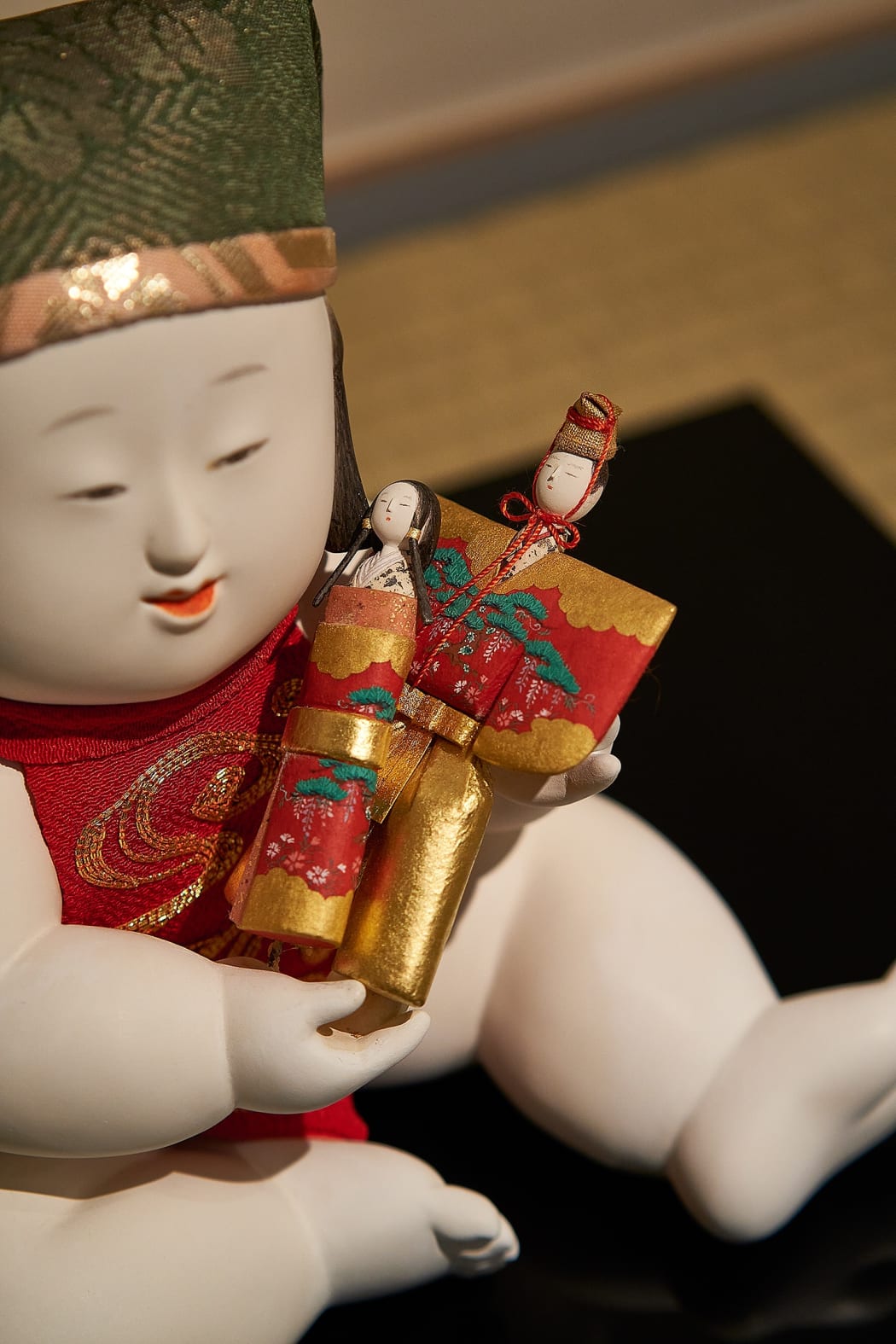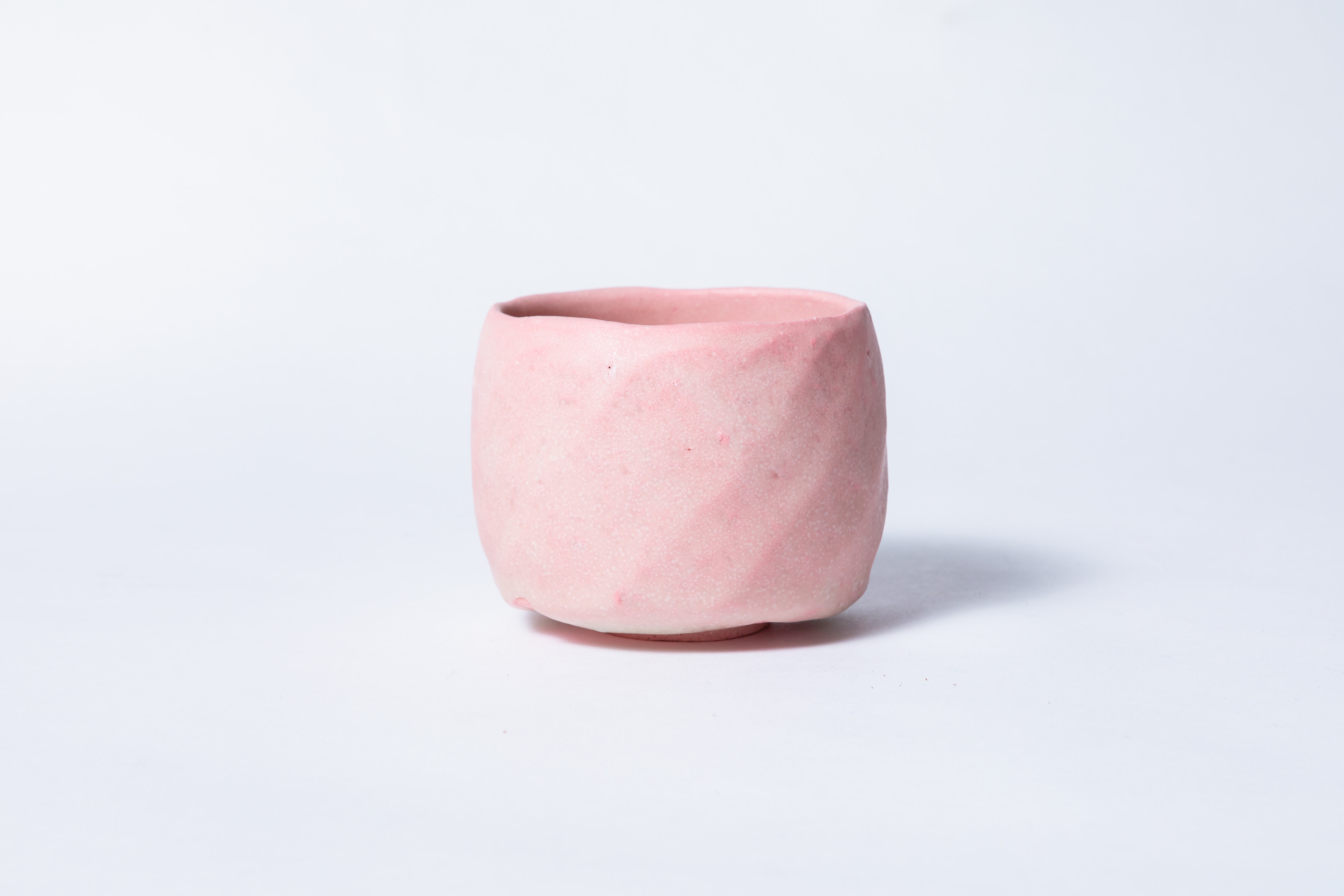

Takashi Tomo-oka, Rape Blossoms 1, A22006
Toward the end of winter in Japan, as reliably as the pale, floating clusters of plum blossoms that mark the approach of spring, dolls begin to appear. In department stores and shop windows, in schools, libraries, and in homes, intricate arrangements of diminutive dolls and accessories are displayed atop tiered stands draped with red fabric.

Hitomi Kawamura, Doll, B8135P
These dolls mark Hinamatsuri, Japan’s Doll Festival, also known as “Girl’s Day,” which takes place on March 3 and celebrates young girls and femininity, and the coming of spring. With their voluminous robes, made from many layers and pleats of richly-hued fabrics, and elaborate hairstyles and headgear, the dolls evoke the aristocratic fashions of Japan’s Heian period (794–1185). A pair of dolls, typically the largest and most elaborate, sit at the top of the display, signifying a bride and groom, or the empress and emperor. Arranged around and beneath them are smaller dolls, as attendants, and trinkets, flowers, and sweets placed on lacquered dishes.

Hinamatsuri displays are part of Japan’s rich craft tradition of dollmaking. Parents or grandparents will often give a hinamatsuri set to a young daughter, or pass one down as a family heirloom. A home hinamatsuri display may be elegant and elaborate, or simple and cute, but either way they are treasured examples of Japanese craft.

Komao Hayashi, 花飾り Flower Decorations for Hinamatsuri, B2037AP
Like many East Asian festivals, the date of Hinamatsuri is itself significant. Since the Heian period, the third day of the third month has been marked as a day to ward off inauspicious energy. In fact, the doll arrangements that are now a central part of the day’s observance, may have derived from earlier practices of floating paper dolls down a river as a form of purification.
Often called Momo-no-sekku, of the Peach Season Festival, Hinamatsuri was historically observed according to the lunar calendar in late spring and early summer when the peach blossoms were in full bloom.

Fujio Kawagishi, Scroll for Hinamatsuri, A452P
In the days leading up to Hinamatsuri, families and friends gather to celebrate with foods that match the holiday’s kawaii, or cute, aesthetic and appeal to young children. Hina-arare, pastel-colored puffs made from mochi rice, are served along with pink, white, and green sweet hishi-mochi and shiro-zake, a non-alcoholic drink made from fermented rice. Temari-zushi, plump balls of sushi rice topped with dainty arrangements of fish and vegetables, evoke the beautifully embroidered temari balls of Japanese folk art.

Tomoyuki Hoshino, Kasumi, C22400NP
Contributed by: Harrison Schley
